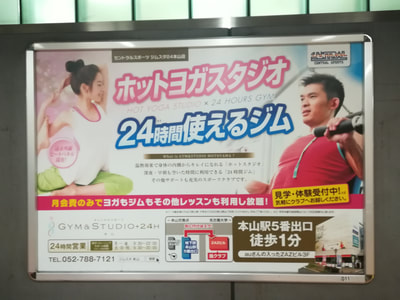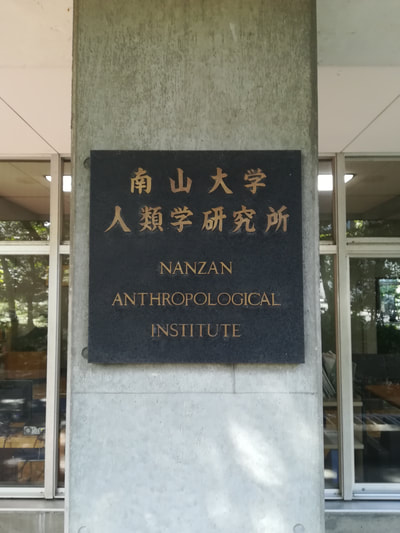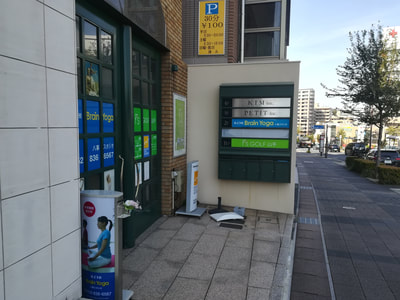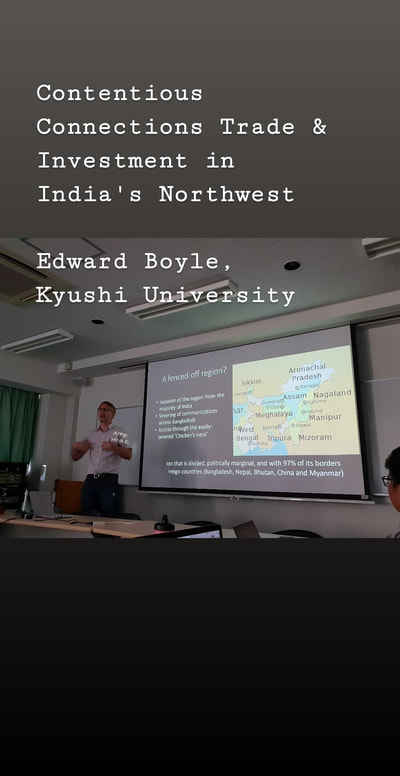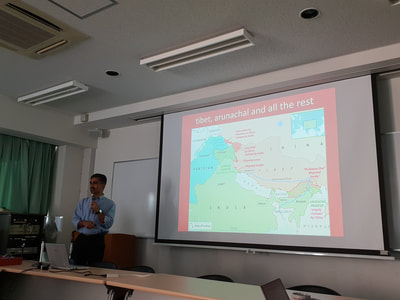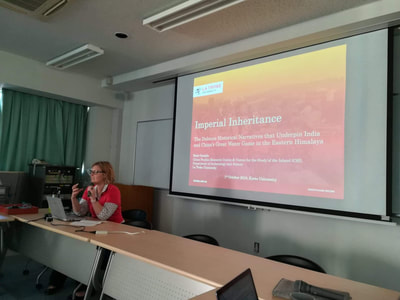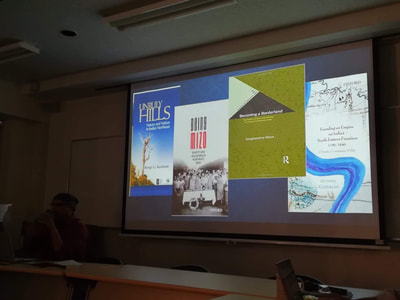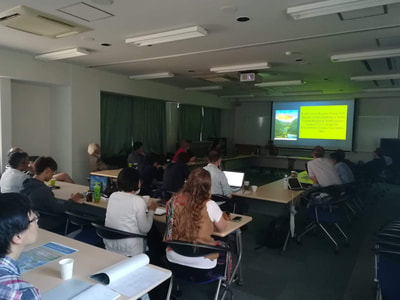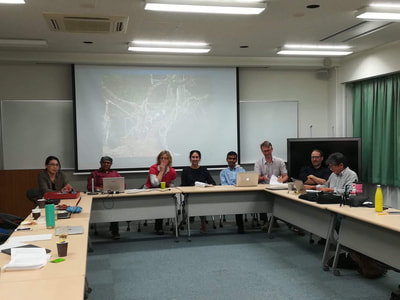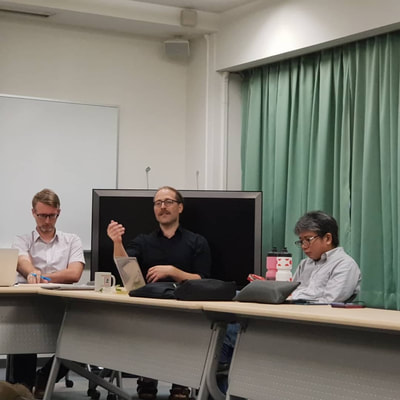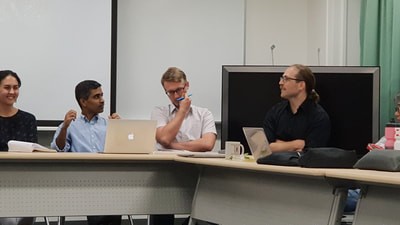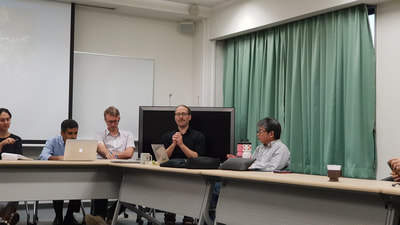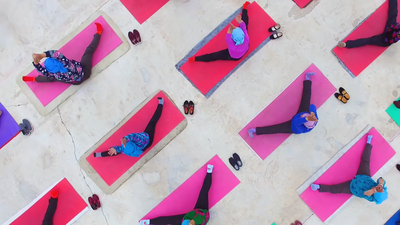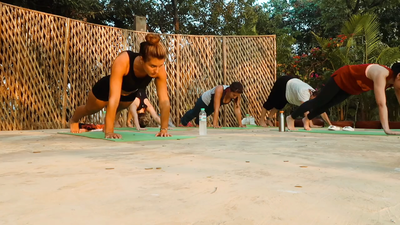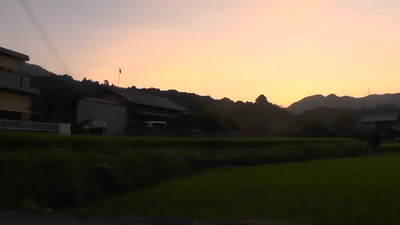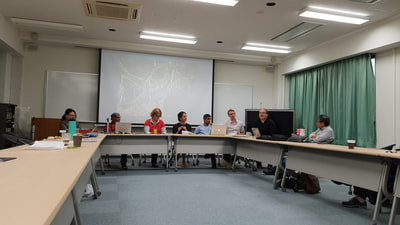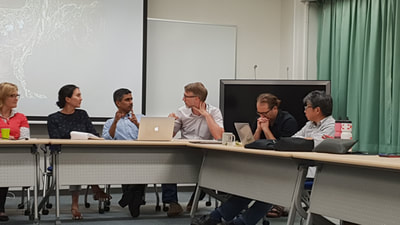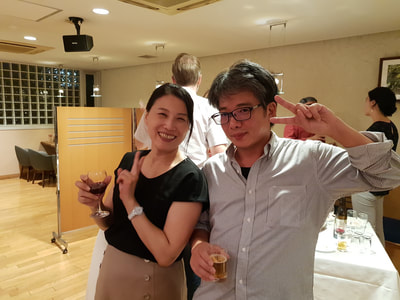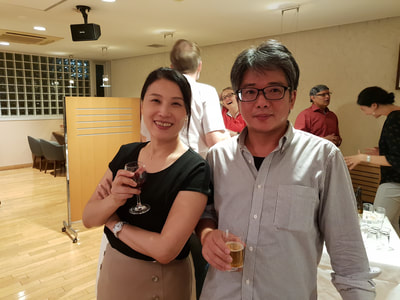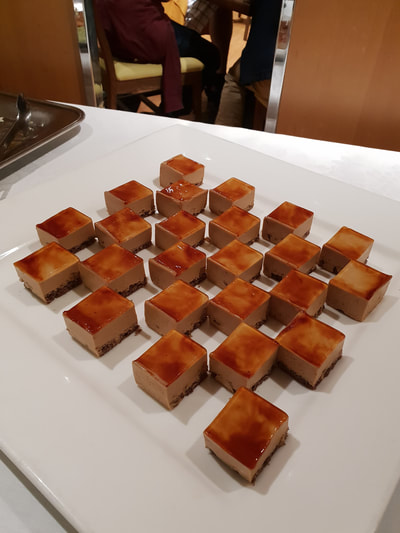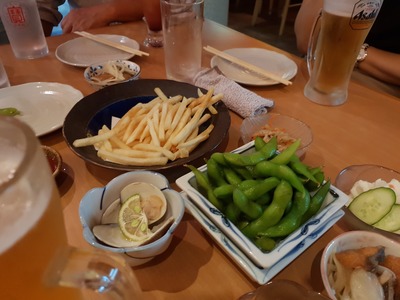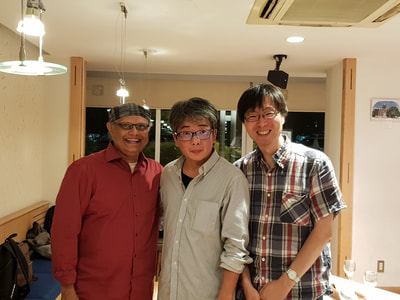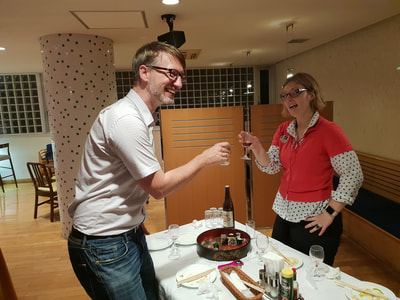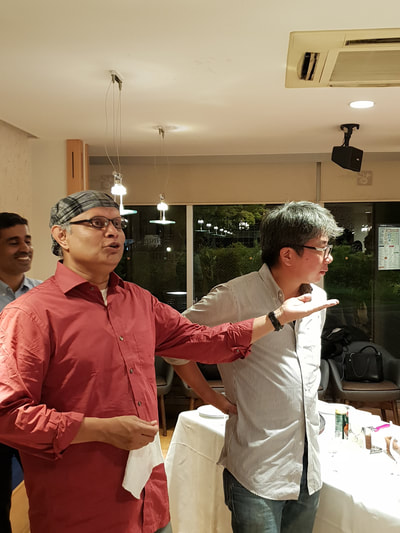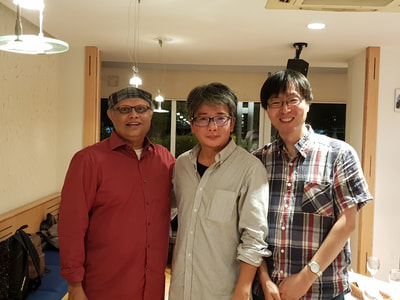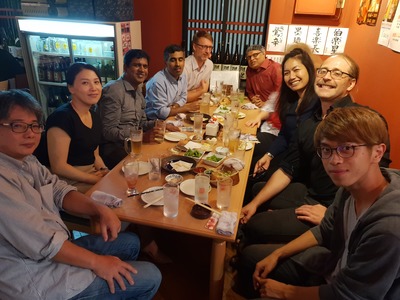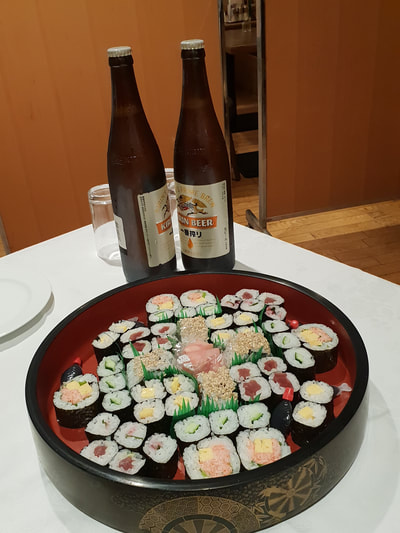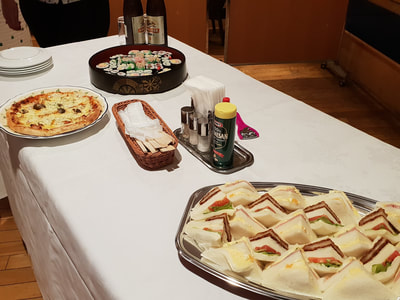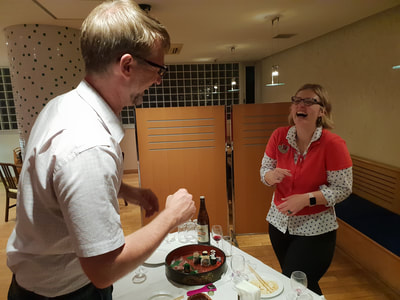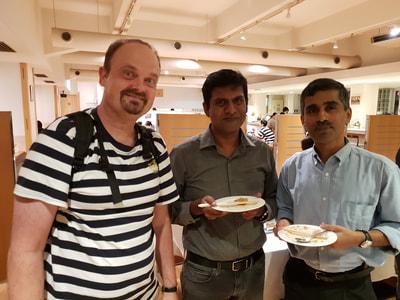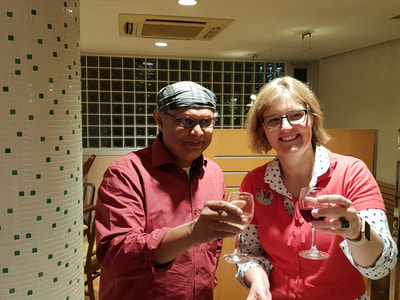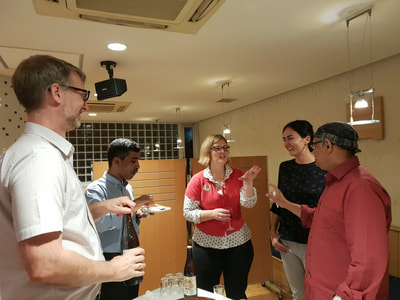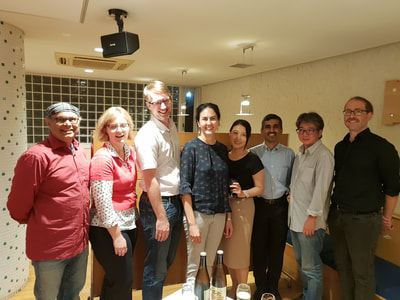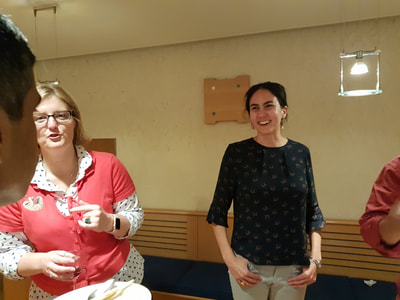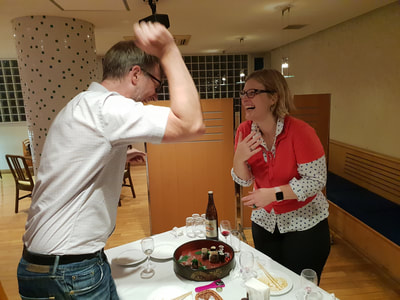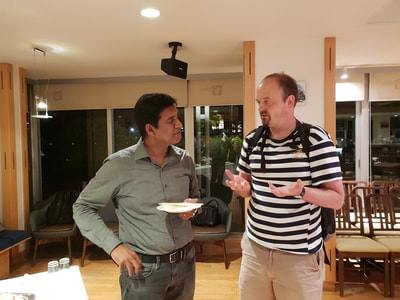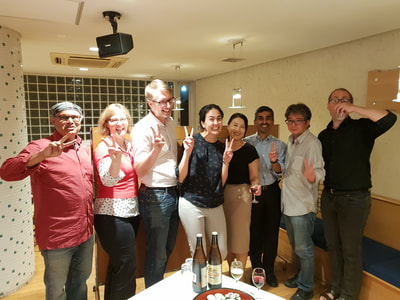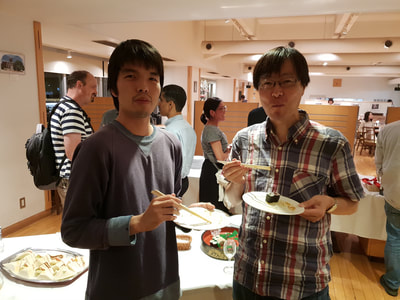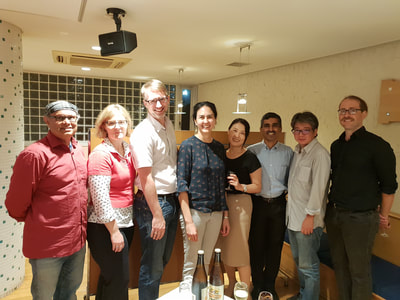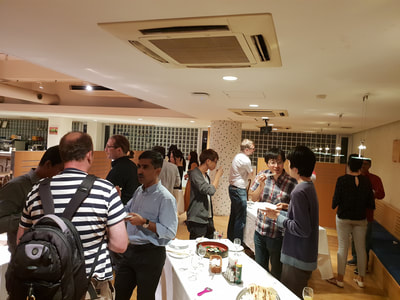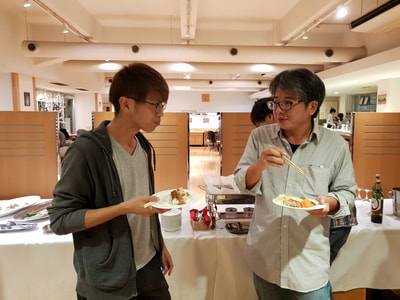|
28/10/2018 0 Comments when yōga isn't yogaCame across a yoga homonym in this article, which turned out to be about western art in Japan. Apparently, in Japanese, yō 洋 means 'Western' as opposed to wa 和, which means 'Japanese'. Yōga is a Western style painting movement in modern Japan and Nihonga is the Japanese equivalent. Thanks Justin B. Stein
yōgaka ようがか 洋画家 Noun 1. artist who produces Western-style paintings Wikipedia definition 2. Yōga (art)Yōga or literally "Western-style paintings" is a term used to describe paintings by Japanese artists that have been made in accordance with Western (European) traditional conventions, techniques and materials. The term was coined in the Meiji period, to distinguish such works from indigenous traditional Japanese paintings, or Nihonga . Read “Yōga (art)” on English Wikipedia Read “洋画家” on Japanese Wikipedia Read “Yōga (art)” on DBpedia https://jisho.org/word/%E6%B4%8B%E7%94%BB%E5%AE%B6
0 Comments
25/10/2018 0 Comments yogascapes in japan pens have arrivedWe got some YiJ pens made. Well, Aimée-Linh McCartney made it all happen. I just happened to be at home, sick with bronchitis, to receive them. If you want some pens, they will be up for sale on the yogascapes website, soon. They are made with bamboo and come with black ink. They are ball point pens. I don't like felt tips. Not sure about the rest of you. But, they are well made.
Giving a talk today at Nanzan Uni's Anthropology Insitute - it's the first talk I'm really giving about the project. At the 1/2 way point of the project, it seems like a good time to say something. Hopefully, you can tune in via the yogascapes FB page. I don't have @tattooedyogini_ here today to run the social media stuff. :-( Japan standard time is GMT+9
10月22日(月)13:30〜17:40(最大延長18:00まで) 13:30~14:30 菅沼文乃氏「調査報告・宮古島出身老年者の故郷観について(仮)」 14:30~15:30 濱田琢司氏「移動する職人─小石原の「廻り職人」を中心に─」(仮) 15:30~15:40 休憩 15:40~16:40 Patrick McCartney氏 「Nihon no Yogasukepu: An Update on Global Yoga in Japan(日本のヨガスケープ)」 16:40~17:40 ムンシ ロジェ ヴァンジラ氏 隠れキリシタン関連 While I was travelling from Kyoto, I noticed a couple of posters and yoga businesses. A 24hr gym that has 'hotto yoga' and, what I gather to be a pyramid scheme cult, 'brain yoga'. Yoga seems to have reached a very quotidian space in the public imagination. There are many yog studios and posters are found on train platforms, as well as the tunnels connecting lines. Earlier this week, we attended a small symposium on zomia, borders, and development. Many of the talks focused on the NE of India. There were discussions about the fluidity of borders, but also how borders can bring development. A stand out was the discussion around how states might erase histories of places to create spaces that can then be used for whatever purposes the state wants. And, how even though roads might be built, they might not be intended for the those whose land the roads go through.
After the symposium, we enjoyed drinks and beverages at Camphora Cafe, located on campus. Dr Patrick McCartney talked about the ways in which people assert that yoga can cure all the world's problems, especially poverty. Yet, curiously, all the data suggests the complete opposite. That people participate in yoga having already become 'developed' and gained a certain level of prosperity. All across the world, it is predominantly educated, middle class women with disposable incomes who can pay for access into yogaland. How do people suffering from extreme poverty pay for access? How does spending time doing yoga help find wood to keep the uninsulated house warm? How does meditating cover the basic material needs of people on the economic margins? How, ultimately, does yoga help develop, not on the self, but also, the community? Dr Patrick McCartney's presentation is available on sound cloud. #yoga #ヨガ #योगा #យូហ្គា #瑜伽 |
CategoriesArchives
November 2019
|
 RSS Feed
RSS Feed
